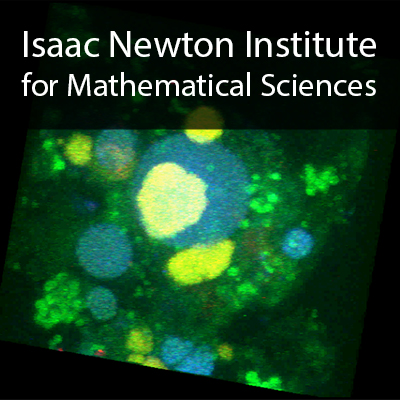Plenary Lecture 6: Metabolic conflicts drive multi-scale organization of microbial activities
35 mins 6 secs,
511.38 MB,
MPEG-4 Video
640x360,
29.97 fps,
44100 Hz,
1.94 Mbits/sec
Share this media item:
Embed this media item:
Embed this media item:
About this item

| Description: |
de Lorenzo, V (Centro Nacional de Biotecnología)
Thursday 27 November 2014, 09:30-10:05 |
|---|
| Created: | 2014-12-02 11:38 |
|---|---|
| Collection: | Understanding Microbial Communities; Function, Structure and Dynamics |
| Publisher: | Isaac Newton Institute |
| Copyright: | de Lorenzo, V |
| Language: | eng (English) |
| Distribution: |
World
|
| Explicit content: | No |
| Aspect Ratio: | 16:9 |
| Screencast: | No |
| Bumper: | UCS Default |
| Trailer: | UCS Default |
| Abstract: | Biological bottlenecks for microbial biodegradation of recalcitrant compounds in the environment include [i] unfavourable thermodynamics of (bio)chemical reactions at stake, [ii] lack of specificity of existing pathways and enzymes for novel substrates, and [iii] physicochemical stress encountered in polluted sites. Besides these limitations, bacterial cells also experience increased endogenous oxidative stress during metabolism of aromatic compounds, which is exacerbated when enzymes meet suboptimal substrates. Evolving bacterial metabolism is thus shaped by chemical constraints acting on the material and dynamic layout of enzymatic networks -and beyond. These are moulded not only for optimisation of given metabolic objectives (e.g. synthesis of a particular amino acid or nucleotide) but also for curbing the detrimental reactivity of chemical intermediates. These features suggest that the physical structure of existing biosystems, from operon assemblies to multi-cellular development may ultimately stem from the need to restrain chemical damage and limit the waste inherent to basic metabolic functions. We have examined oxidative stress brought about by the still-evolving 2,4-dinitrotoluene biodegradative pathway in Burkholderia sp. DNT. The dnt pathway of this bacterium apparently evolved from a precursor naphthalene degradation route and the first enzyme (2,4-dinitrotoluene dioxygenase) maintains some activity towards its earlier substrate. Examination of both in vivo reactions and the associated regulatory system suggests that ROS production is the first bottleneck that evolving pathways have to overcome for dealing with novel compounds. Evolutionary consequences -and some hints and genetic tools for engineering multi-strain biocatalysts- will be discussed. |
|---|---|
Available Formats
| Format | Quality | Bitrate | Size | |||
|---|---|---|---|---|---|---|
| MPEG-4 Video * | 640x360 | 1.94 Mbits/sec | 511.38 MB | View | Download | |
| WebM | 640x360 | 585.35 kbits/sec | 150.56 MB | View | Download | |
| iPod Video | 480x270 | 520.47 kbits/sec | 133.80 MB | View | Download | |
| MP3 | 44100 Hz | 249.79 kbits/sec | 64.28 MB | Listen | Download | |
| Auto | (Allows browser to choose a format it supports) | |||||

